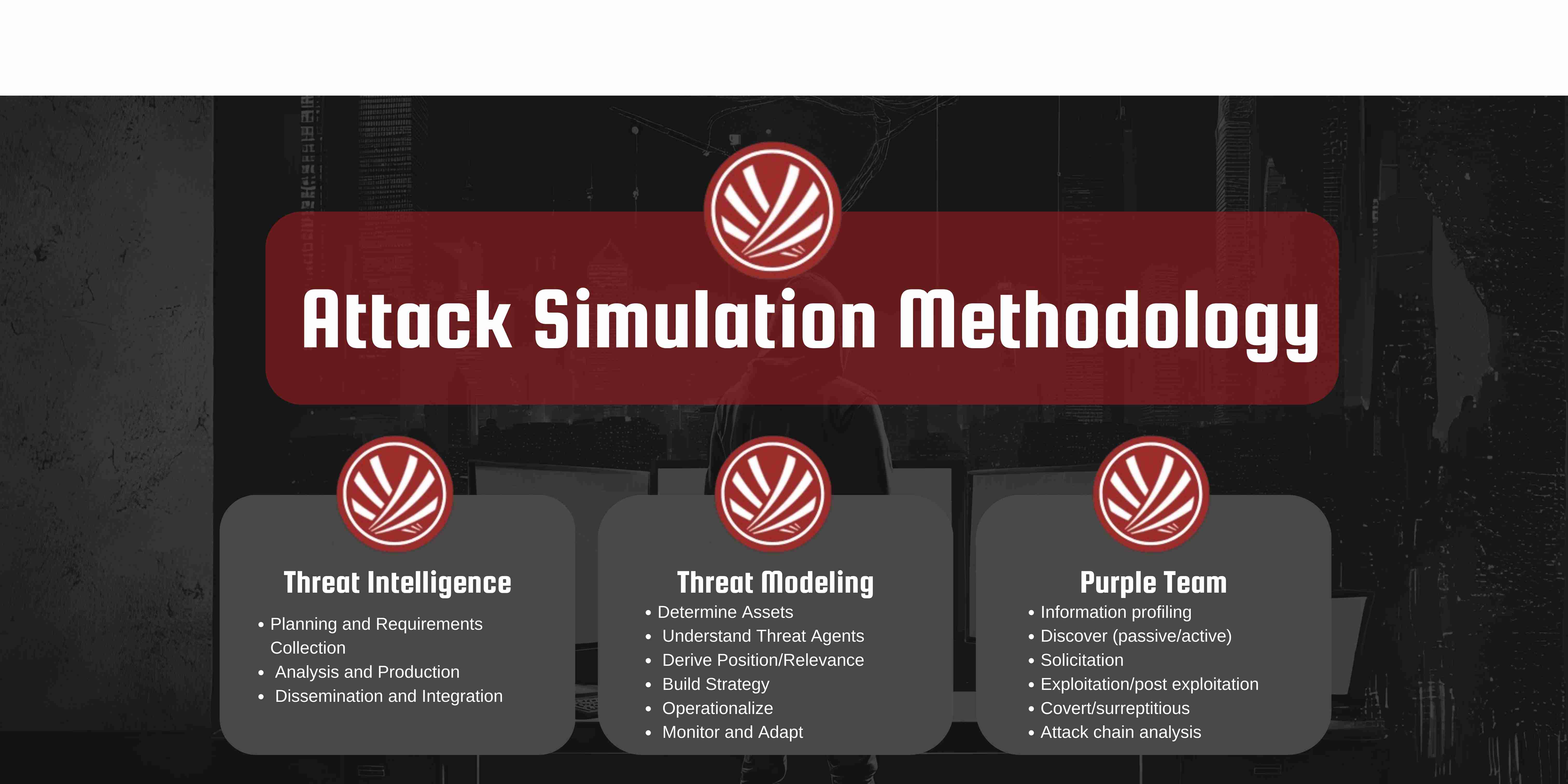The Cysigma's Attack Simulation gauges actual resilience to cybert hreats (e.g., garden-variety cybercrooks, nation states, competitors, hacktivists, etc.), aligns security posture to defined business objectives and prepares your purple team to detect, prevent and respond to attacks.
In a simulated cyber attack, an organization, along with its security partners, replicates a genuine hack on its network, infrastructure, and assets. This emulation involves employing the tools, tactics, and procedures (TTPs) commonly used by known cybercriminals. The simulation is best executed by a "purple team," a collaborative effort involving defensive (blue) and offensive (red) teams. The primary objective of this exercise is to identify vulnerabilities in the organization's defenses, allowing the security team to address and mitigate these weaknesses. By doing so, the organization aims to decrease its susceptibility to real-world cyber attacks.
Cysigma's attack simulation replicates the tactics of an advanced threat actor, mimicking their opportunistic, covert, and goal-oriented endeavors to compromise high-value targets. It exposes real-world threats across the entire attack surface, encompassing logical, physical, and social aspects. This includes testing vulnerabilities through social engineering, covert penetration testing, bypassing physical access controls, and subversion. Through subterfuge and misdirection, we simulate the actions of a hacker, identifying weaknesses, exploiting critical systems, and mimicking a genuine data breach.
Open-source intel (OSINT) retrieves publicly available contact information (phone, email) and performs initial recon on public website exposure, identifying sites that may enable remote access (e.g. Citrix, VPN), portals, webmail apps, etc. Public company/employee info is used during discovery and planning, shaping realistic attack scenarios and informing measurable results. Keeping pace with Payment Card Industry Data Security Standard (PCI DSS) compliance means monitoring reports on compliance (ROC) completion, approved scanning vendors (ASV) requirements and more, all of which will continue to be updated.
Focus on the point of exploitation (using data obtained during discovery to breach the organization’s logical controls). An attack simulation makes use of available opportunistic tactics to mimic a real-world cyber attack, with the result being a breach of logical, social and/or physical security (depending on the required level of access). Cysigma's comprehensive solution set helps you keep your head on a swivel while managing healthcare-centered privacy and security regulations andprotecting electronic protected health information (ePHI).
Translate scenario results, articulating vulnerabilities surfaced by the simulation. Analytics and recommendations help the client understand how best to mitigate identified risks. HITRUST Common Security and Privacy Framework (CSF) helps clients create, access, store and transmit information safely and securely. Transparency is created between business partners and consumers because of the CSF’s certifiability, and this increases trust.
